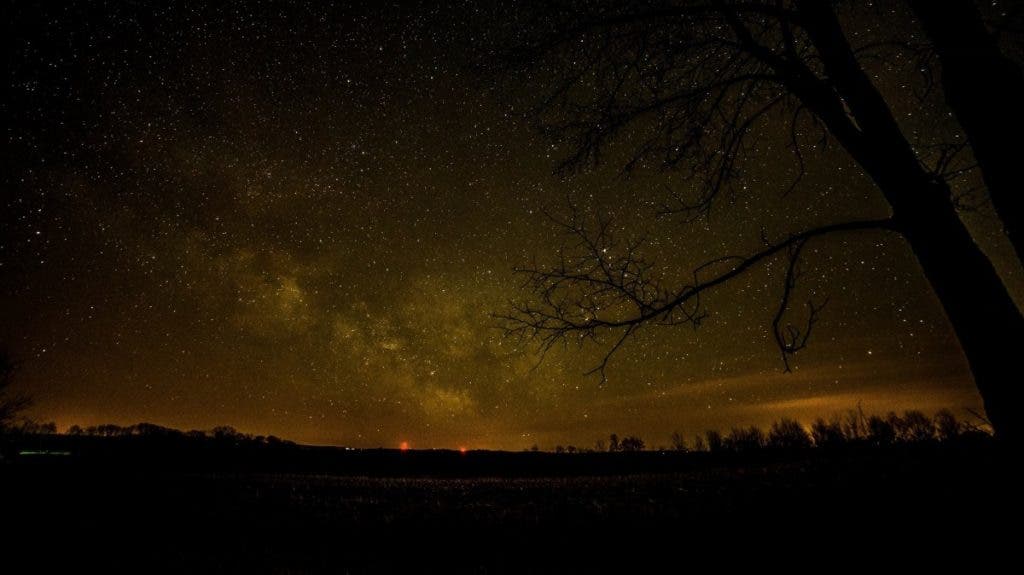Using radio antennas no bigger than a hotel fridge, a small team of astronomers managed to glimpse into the dawn of time, and they published their findings just yesterday. But if that wasn’t dramatic enough, a new paper today reports that the same results are a paradigm shift in an even more obscure area — the readings are our first direct evidence of the existence of dark matter and yield important clues on its nature.

[Editor’s note] We’ve covered the first part of the findings yesterday, and you can read it in-depth here. But, if you happen to be suspicious of links or you like Andrei’s skill with a keyboard, here’s the summed-up version:
Why yesterday was a good day for science
Although it happened billions of years ago, researchers have been able to infer quite a lot about the Big Bang and the following eons. Scientists theorize that right after the big event, everything was dark, and it took a few hundred million years for the first stars to form out of the primordial soup of matter. So far, astronomers haven’t been able to pick up any signal from these stars, as our telescopes just weren’t sensitive enough. Now, using the Experiment to Detect the Global Epoch of Reionization Signature (EDGES), an array of three telescopes from remote Australia, researchers have captured the first glimpses of these ancient objects.
The oldest galaxy we’ve observed emerged around 400 million years after the Big Bang. This signal is the first thing anyone has spotted in the interval between that galaxy was formed and the so-called cosmic microwave background, 380,000 years after the birth of the Universe.
“This is really the only possible probe that we have of the time before the stars,” says Bowman, who is an experimental astrophysicist at Arizona State University in Tempe.

Before the first stars formed, the atoms’ internal states were in microwave equilibrium — they absorbed just as much radiation as they gave out. As the first stars formed, they produced light which disrupted this equilibrium, enabling the atoms to absorb more than they gave out. This is what astronomers have identified yesterday. It gives a unique insight into those early days, showing that, for instance, the initial hydrogen was much colder than originally thought (since the absorption signal was twice stronger than expected, and this correlated with temperature).
Why yesterday made for a great day for science… today!
This also shines new light on the so-called dark matter, a mysterious and invisible form of matter spread through the cosmos.

The signal Prof. Bowman’s team picked up was a radio signal at a frequency of 78 megahertz. The width of this signal’s profile was by-and-large consistent with what they expected to find, but it also had a larger amplitude that they expected — which corresponds to a deeper absorption of the signal in space. They concluded that this means the primordial gasses in the early universe were colder than we’ve estimated, reported on the finding, and presumably thought that was the end of it.
However, that one tiny detail could provide us with the first direct proof of the existence of dark matter, and the first actual clues about its nature. It’s the first direct piece of data we have on dark matter since we’ve first started thinking about it, over one century ago. In other words, that tiny detail yielded a breakthrough in the field.
“I realized that this surprising signal indicates the presence of two actors: the first stars, and dark matter,” says Prof. Barkana, Head of the Department of Astrophysics at the Tel Aviv University, who published the paper detailing the link between this signal and dark matter.
“The first stars in the universe turned on the radio signal, while the dark matter collided with the ordinary matter and cooled it down. Extra-cold material naturally explains the strong radio signal.”
Basically, all we know of dark matter is that it exists… and that we can’t see it. We know its there because we can measure its gravitational effect, but that’s about it. That’s why, in Prof. Barkana’s words, dark matter “remains one of the greatest mysteries in physics.”
“To solve it, we must travel back in time,” he says. “Astronomers can see back in time, since it takes light time to reach us. We see the sun as it was eight minutes ago, while the immensely distant first stars in the universe appear to us on earth as they were billions of years in the past.”
Based on observed gravitational effect, physicists expected dark matter particles to be very heavy, but Prof. Barkana’s results suggest that they must be less than five times as massive as a hydrogen atom. The finding has the potential “to reorient the search for dark matter,” says Barkana.
But this isn’t the only plausible explanation, and we’re still waiting for the dust to settle before any definitive conclusions can be drawn. First, as always, is sheer instrument error. A confirmation would be highly useful, given how fine the measurements the EDGES device was performing. Even the tiniest error in calibration or measurement could distort the signal, and although the researchers are confident they’ve done their best to ensure that no error slipped in, they’d also welcome any confirmation.
“We’re eager for others to confirm the result,” Bowman added.
One definitive piece of evidence in favor of Barkana’s theory could be picked up with a large array of radio antennas. He says that, according to his model, the dark matter should have produced a very specific pattern of radio waves. Luckily for us, one such array, the SKA, the largest telescope in the world, is already under construction — if it picks up on the signal, the SKA “would confirm that the first stars indeed revealed dark matter,” concludes Prof. Barkana.
The paper, “Possible interaction between baryons and dark-matter particles revealed by the first stars” has been published today in the journal Nature.
Bowman’s paper, “An absorption profile centred at 78 megahertz in the sky-averaged spectrum” has been published in the journal Nature.


